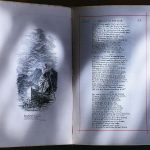The Family Reunion by T.S. Eliot is a psychological drama about a family forced to confront dark secrets and unresolved guilt. The play explores themes of redemption, the weight of the past, and the emotional conflicts that arise during a family gathering.
This work explores the same themes as Hamlet. The Family Reunion and Hamlet explore themes of guilt, inner conflict, and the consequences of the past, with characters returning to confront their family’s dark secrets and emotional turmoil.

Summary of The Family Reunion by T.S. Eliot
Harry’s Return
The Family Reunion by T.S. Eliot is a psychological drama that examines the emotional issues that exist within a family, emphasizing themes of guilt, forgiveness, and the lasting impacts of the past.
Eliot explores the complex nature of family dynamics and the ongoing consequences of unresolved guilt via this deep investigation of human emotions.
The difficulties people have in trying to make sense of their past deeds and the prospect of salvation are depicted in the drama.
The Family Confronts the Past
Harry returns to his family’s house at the start of the play after a long absence. His return is not a happy one, but rather tense and uneasy. Harry returns not only for a reunion but also to face his history and the unsolved problems that have troubled him.
His visit brings to light long-buried family secrets and sad memories. The emotional drama that ensues is set in motion by this, as Harry’s homecoming compels the family to confront what they have been avoiding. ghosts they have made an effort to forget.
The Ghostly Presence
There is an overall feeling of guilt and a lingering sense of helplessness over the past throughout the performance. Several characters experience ghostly visions or a feeling of being watched, which are symbolic of the emotional ghosts of the family’s history.
These spectral presences represent the unresolved guilt and the burden of the past that still affects the family. The ghosts, who are a constant menace throughout the play, emphasize the gravity of the protagonists’ past actions and their consequences by serving as a reminder that the past cannot be avoided or ignored.
Eliot uses these ghostly elements to reflect the psychological irritation of the family, as they are not just ghostly by literal figures but by the unresolved emotions and sins of their past.
The ghosts represent the obvious nature of guilt, which continues to influence the present, no matter how hard the family tries to bury it.

The Climax: A Choice
Harry must make a crucial decision at the play’s conclusion: either face the effects of his previous acts or attempt to avoid them. This is a crucial time since it will decide how the entire family’s emotional journey turns out.
Harry is having a fierce internal conflict, and his audience senses the tension rising as he has to choose between more tragedy and atonement.
Harry’s character is put to the test at this point, and he is forced to face the hurt of his past. His decision will impact his family members’ life as well as his own, as it will either release them from the emotional weight of their hidden or further imprison them in unresolved problems.
The climax is the point where Harry’s character is truly tested, and his decision will dictate the emotional resolution of the play.
The Resolution
The family members make an effort to accept the past in the resolution. Others struggle with their unresolved guilt and the effects of their acts, while others experience a sense of redemption.
The play’s sad conclusion illustrates that family reunions involve facing hard realities in addition to enjoying time together. The emotional scars continue even as some characters begin to reconcile with their pasts.
Even when the past is recognized, the resolution highlights that emotional wounds take time to heal and are not always completely healed.
The play’s conclusion is moving because it implies that although atonement is possible, there are frequently long-lasting effects. The family is left with a sense of unresolved tension, illustrating that even in moments of reconciliation, the past can continue to haunt the future.
Analysis of The Family Reunion
T.S. Eliot’s The Family Reunion is not just a story about a family meeting; it is an intense examination of psychological and emotional struggles, mainly related to guilt, redemption, and the influence of the past.
Themes in The Family Reunion
Guilt and Redemption
The conflict between guilt and forgiveness is one of The Family Reunion’s most important topics. The main character, Harry, comes home to the family home feeling guilty.
His psychological conflict can be seen throughout the play: he must either confront the reality of his previous deeds or carry on living in the shadow of them. Eliot looks at how hard it is to obtain salvation and how shame may plague people.
The play argues that the only way to achieve inner peace is to confront one’s past, but it also shows how uncomfortable and even dangerous this process may be.
Harry’s search for forgiveness is a metaphor for the larger human experience of confronting our darkest secrets because he suffers enormously from guilt.
The Weight of the Past
The weight of the past is a further significant problem. Events from long ago have an important effect on the family in the play, and these events affect the relationships among the family members.
Harry’s return forces the characters to face down past secrets and scars, bringing the past into full view. Eliot shows how the past never really goes away; it always lingers and shapes feelings and choices.
This subject examines the notion that the past will always have control over us, despite our best efforts to forget it.
The family members are forced to face the fact that, despite their best efforts, they will never be able to completely escape what has occurred in the past as they face their own history.

Family Secrets and Dysfunction
The unstable relationships within families are another topic addressed in the Family Reunion. The reunion itself is a tense, guilty, and silently angry one rather than a happy one.
Although the family members are bound together by a common past, that past is filled with unsolved secrets. Eliot challenges the notion that family members should always look out for one another, arguing that it’s crucial to deal with difficult realities, even if doing so means upsetting the family balance.
This subject shows how conflict, mistrust, and emotional upheaval can result from family secrets. In the end, the family reunion—which is supposed to unite people—acts as a trigger to reveal underlying problems that could destroy them.
Supernatural Elements
The plot has a significant supernatural element. Eliot illustrates the dominance of the past over the present via spectral images. In addition to representing guilt, these spectral representations also represent the feelings and memories that the protagonists are unable to shake.
The presence of the ghosts gives the performance a spooky feel and demonstrates that the past cannot be easily ignored or forgotten.
The supernatural components heighten the sense that the family is caught in a vicious circle of unresolved feelings and guilt, unable to go on without facing their haunting history.
Literary Device in The Family Reunion
| Literary Device | Explanation |
| Symbolism | The “ghosts” in the play symbolize the emotional baggage of the past, representing unresolved guilt and the lingering presence of past mistakes. |
| Allusion | Eliot alludes to classical mythology and literature, referencing themes of fate and redemption, particularly through the character of Harry, who must confront his past. |
| Imagery | The use of vivid imagery, such as descriptions of the family home and the supernatural occurrences, creates a haunting atmosphere that reflects the characters’ inner turmoil and the weight of their history. |
Character Analysis of The Family Reunion
Harry
The emotional journey of Harry, the play’s protagonist, forms the central theme of The Family Reunion. He is forced to face guilt and unresolved problems that have been bothering him for years when he returns to the family home.
Harry struggles throughout the play with whether to take ownership of his acts or to flee them. His internal conflict serves as a metaphor for the greater themes of atonement and the challenge of confronting reality.
Harry’s choice to face his history at the play’s conclusion is a pivotal point in his mental growth. Even when those desires conflict with the painful realities of one’s history, his character stands for the human need for closure and healing.
Angela
One of the main family members who contributes significantly to the play’s emotional struggle is Angela. Her encounters with Harry reveal some of the family’s most painful secrets, and she is deeply affected by the family’s troubled past.
The emotional burden of family dynamics and the impact that unsolved difficulties can have on relationships are expressed by Angela’s character. As she battles her own emotions over the family’s past, her role in the play stresses the conflict between facing and evading the truth.
The Ghosts
In addition to being supernatural beings, the play’s ghosts stand in for the psychological and emotional burden of the past. These ghostly representations stand in for the protagonists’ unresolved feelings, regrets, and guilt.
The play is made darker by the ghosts’ presence, which emphasizes how the past still influences the present. They stand for the characters’ ability to overcome their pasts despite their best efforts to move on.
Symbolism in The Family Reunion
The Family Home
The family home is a symbol of the past. It symbolizes the actual location where the family’s history took place as well as the psychological location where the protagonists are locked up by their thoughts.
The characters are forced to face their pasts in the house, which is replete with memories of the family’s secrets and shame. The location emphasizes the idea that the past is ever-present, hiding behind the family’s bonds and the walls.
The Ghosts
The play’s ghosts stand in for the psychological and emotional burden of the past. They are not only supernatural beings; rather, they are the remaining consequences of unresolved past choices and deeds.
The ghosts stand for the notion that unsolved problems and guilt cannot be easily removed; rather, they must be addressed in order to go forward. They serve as a continual reminder of the family’s helplessness in the face of the past.
The Family Reunion
The characters’ desire to face their pasts is represented by the family reunion itself. Reunions are usually happy occasions, but in The Family Reunion, there is a lot of tension and unresolved conflict.
The family members are compelled to face the realities they have been ignoring by the reunion. The reunion serves as a metaphor for the inevitable nature of family history and the need to confront harsh realities.

Famous Lines from The Family Reunion by T.S. Eliot
The Family Reunion by T.S. Eliot is a drama that explores profound psychological issues including guilt, forgiveness, and the lingering effects of the past.
There are several strong lines in the play that capture these nuanced feelings. Here, we’ll examine two of the play’s most famous lines in further detail and consider how they emphasize its main ideas.
“The past is always with us.”
One of the play’s main themes—the weight of the past—is openly addressed in this statement. The characters are compelled to face their lasting secrets and unresolved guilt that have affected their lives throughout the play.
The notion that “the past is always with us” highlights the difficulty of escaping one’s past.
This remark illustrates how, despite the characters’ best efforts of ignoring it, the past continues to affect the present in the play.
The family members are unable to escape the repercussions of their previous choices, whether through their relationships, thoughts, or behaviors. Their emotional and psychological health is impacted by the lingering ghosts of past transgressions and regrets.
This sentence perfectly captures the idea that we cannot just ignore our pasts; they are an integral part of who we are and will continue to influence who we become unless we face them.
The play’s many references to the past serve as a reminder that not all wounds may be healed with time; some require direct confrontation in order to be resolved or healed.
It reflects the universal reality that our past choices, deeds, and errors frequently have an impact on us whether we like it or not.
“I am here to face the truth, not run from it.”
The idea of forgiveness and the significance of facing one’s guilt are emphasized in this statement. Characters like Harry in The Family Reunion battle the remorse and burden of their previous deeds. The play’s central question is if atonement is possible and, if so, how it might be attained.
A significant step toward self-acceptance and self-realization is taken by the character when they declare, “I am here to face the truth, not run from it.” This line represents a turning point in self-awareness and a readiness to take accountability.
It is a statement that facing the past is essential for personal development and atonement, despite the suffering and emotional upheaval that may accompany it. In order to heal and resolve internal conflict, facing the truth becomes essential.
This remark, in the context of the play, refers to the universal human desire to avoid facing unpleasant realities. Eliot contends that acceptance and conflict, rather than avoiding it, are the paths to true peace and atonement.
This scene perfectly captures the character’s choice to accept responsibility for their acts rather than try to escape them in the hopes of finding a solution.
Additionally, this sentence runs counter to the play’s exploration of the idea of escape. The character who confronts the reality is the one who makes progress toward atonement, even when many of the others try to ignore or deny their past.
Eliot uses this line to demonstrate the complexity of human emotions and the necessary struggle for reconciliation and emotional freedom.
Conclusion
The Family Reunion by T.S. Eliot explores deeply into themes of guilt, atonement, and the weight of the past. The play explores the emotional difficulties within a family and the necessity of facing uncomfortable realities through its powerful psychological drama.
The intricacies of human emotions and relationships are brought to light by the individuals’ attempts to flee the past and their struggles with remorse.
The Family Reunion ultimately demonstrates that although confronting the truth can be upsetting, it is the only path to recovery and atonement.
The play continues to be a perceptive examination of the significance of emotional honesty and self-awareness, as well as the influence of the past.
FAQ’s
The title signifies a gathering that is not only a family celebration but also a confrontation with the unresolved emotional issues and secrets that haunt the family.
The Family Reunion consists of three acts.
The story follows Harry’s return to his family home, where long-buried secrets and past guilt resurface, forcing the family to confront painful truths.
The central idea of The Family Reunion is the emotional conflict within a family as they confront their past, guilt, and unresolved secrets.









